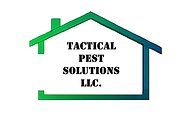Customizable Pest Management Plans for Every Home
- David Kelley
- Jun 25
- 3 min read
Pest control is a necessity that every homeowner must consider. With the risk of infestations looming, having a proper management plan in place is essential. By developing a customizable pest management plan, you can tailor your pest solutions to fit your home's unique needs. This post explores various strategies that ensure effective pest control while being adaptable based on your situation.
Understanding Pest Management
Pest management is not just about extermination; it encompasses a variety of strategies aimed at controlling pest populations while considering the environment. This may include monitoring, preventive measures, and even utilizing biological control methods. For homeowners, understanding these different aspects of pest management can lead to more effective solutions.
Pest management involves assessing your home for potential problem areas. For example, areas such as:
Basements and attics
Kitchen cabinets and pantries
Exterior entry points
By identifying these vulnerable spots, specific preventive measures can be employed to reduce the likelihood of pest infestations.

Key Elements of a Customizable Pest Management Plan
Creating a customizable pest management plan consists of several key elements including inspection, identification, treatment, and monitoring.
Inspection
Start by conducting a thorough inspection of your property. Look for signs of pest activity, which may include:
Droppings
Nesting materials
Damaged food packages
Document your findings as they will help inform the next steps in your management plan.
Identification
Once you have identified potential trouble areas, the next step is to identify the pests in question. Research the most common pests in your area, whether they be termites, rodents, or ants. Understanding their behavior is critical for effective management.
Treatment
Treatment strategies should be tailored to the specific pests identified. For example, if you discover a bed bug issue, treating the area with heated steam or commercial-grade insecticides can be effective. Alternatively, if you're dealing with a rodent problem, traps may be the best option.
Example of Treatment Strategies
For Cockroaches: Use baits and traps, sealing up entry points.
For Ants: Identify their trails and apply pesticide around entry points.
For Termites: Implement preventative barriers and baiting systems.

Monitoring
Once treatment has begun, regular monitoring is essential. Inspect your home periodically to ensure that pest activity has decreased or eliminated altogether. It's crucial to adjust your management plans as needed based on your monitoring reports.
How Much Is Pest Control Roughly?
The cost of pest control can vary significantly depending on several factors, such as:
The type of infestation
The size of your property
The treatment methods used
On average, homeowners may spend anywhere from $125 to over $500 for an initial service visit. Follow-up treatments range from $150 to $225. Engaging in flexible pest services can help create more cost-effective solutions tailored to the frequency and severity of your pest problems.
Frequency of Services
The frequency of pest control services may also influence your overall budget. Depending on the pest types, some homeowners may require monthly visits, while others might find bi-monthly or quarterly schedules sufficient. Always discuss this aspect with your pest management professional to find a plan that fits your needs and budget.
The Importance of Eco-Friendly Pest Management Options
In an age where environmental sustainability is a priority, consider integrating eco-friendly methods into your pest management plan. These methods typically use fewer chemicals, reducing the risk to both human health and the environment.
Natural Remedies
There are numerous natural remedies that can mitigate pest issues:
Diatomaceous earth is effective for crawling insects.
Essential oils such as peppermint and lavender can deter pests and offer a pleasant scent.
Using these alternatives not only keeps your home safe but also aligns with a sustainable lifestyle.

Wrapping Up Your Pest Management Strategy
By developing a customizable pest management plan, you can ensure the safety and comfort of your home. Start with an assessment, move through a targeted treatment plan, and include ongoing monitoring to keep pest issues at bay. Remember to consider eco-friendly options as part of your strategies for a sustainable approach to pest management.
Ultimately, having a proactive pest management plan can save you time, money, and headaches in the long run. Whether facing a small ant invasion or a more significant challenge, a tailored approach is key to effective and lasting pest control. Embrace the tools and strategies available to you, and enjoy peace of mind in your pest-free home.






Comments